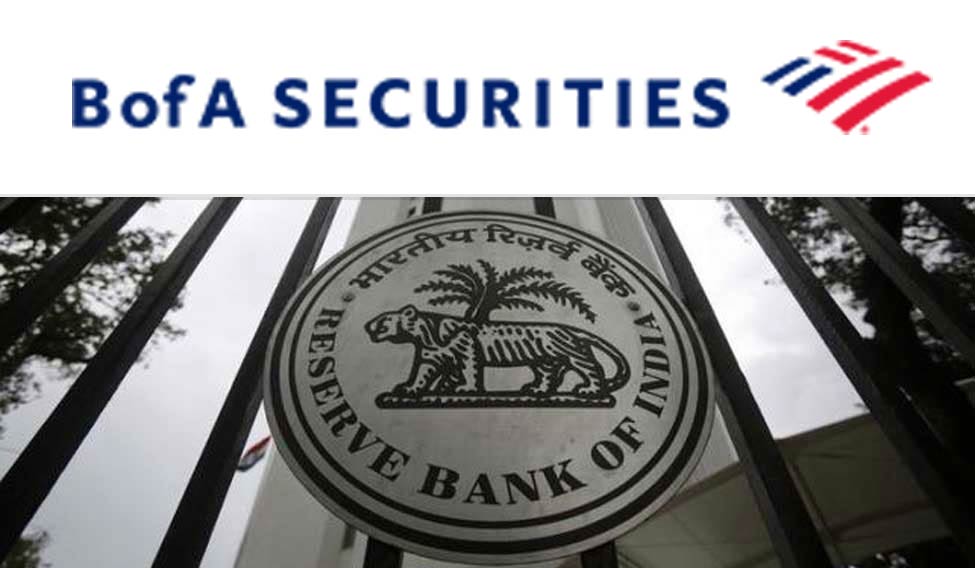With the economy taking a huge knock due to the COVID-19 pandemic and the nationwide lockdown, the Reserve Bank of India is expected to further cut interest rates by at least 50 basis points by October, Indranil Sen Gupta, India economist at Bank of America Securities said on Thursday.
Due to the nationwide lockdown that led to the closure of factories and markets across the country and construction activity was suspended, BofA Securities expects India’s GDP to contract by 3 per cent in the year ending March 2021, assuming that the lockdown ends somewhere in the middle of August. However, if the lockdown continues to get extended, then the GDP could contract as much as 5 per cent, Sen Gupta said.
In FY22, the GDP is expected to surge 9 per cent, aided by the low base effect, he added.
The International Monetary Fund (IMF) last month projected India’s economy to shrink 4.5 per cent this year. Similarly, the finance ministry too expects a 4.5 per cent contraction in the economy. Credit ratings agency S&P has forecast India’s economy to contract 5 per cent, before rebounding 8.5 per cent next year.
Globally, most major economies are expected to face a recession this year, and central banks have cut interest rates sharply to near zero. The RBI on March 27 had lowered the repo rate by 75 basis points, and further cut it by 40 bps on May 22, driving the benchmark rate at which it lends money to banks to 4.0 per cent, its lowest since 2000.
The expectation is that RBI will continue its focus on reviving the economy, hit badly by COVID-19.
“We have probably one of the few central banks, which can cut interest rates from here. We also have monetary arrows in our quiver, which is not the case with many central banks. We think the RBI will not shy away from using them,” said Sen Gupta.
The efforts will be aided by inflation peaking off and food inflation also likely to fall on the back of a good monsoon this year.
“We have had a bumper summer harvest and we are looking at fairly good rain, sowing is up. So, while there is a global COVID-19 shock, which is hitting us as well, we have some kind of buffer in rural India,” Sen Gupta said.
He further pointed to the over $500 billion in foreign exchange reserves that the RBI has stockpiled, which he says is the single biggest support for India’s economy.
“The RBI will cut rates by 50 bps by October in our base case. If growth actually falls by 5 per cent, maybe they will cut 150 bps,” said Sen Gupta.
BofA Securities expects the fiscal deficit to rise to 10 per cent of GDP in the current financial year. Sen Gupta feels the RBI will have to step in to fund this huge rise in fiscal deficit.
“Effectively, we are looking at $95 billion of open market operations (OMO) from the RBI,” he said.
Separately, he also called for more demand-side measures from the government when the economy begins to recover.
“There has to be further interest rate subsidies for small and medium enterprises (SME) and real estate. We expect the oil taxes to come down to support consumption demand. There is also a need to recapitalise public sector banks,” said Sen Gupta.
BofA expects anywhere between $7 billion to $15 billion would be needed to recapitalise banks. This could be done by the government issuing recapitalisation bonds, but also RBI’s revaluation reserves, he said.
“RBI today has $130 billion of revaluation reserves and therefore those can be utilised to recapitalise banks,” he pointed.
The RBI has different kinds of reserves. One is the currency and gold revaluation account, which is the value of the gold and foreign currency that it holds. The other reserves include contingency fund and asset development fund. The currency and gold revaluation account makes up for a significant portion of RBI’s reserves.
In the last financial year, RBI had transferred Rs 1.76 lakh crore from its reserves to the government.



